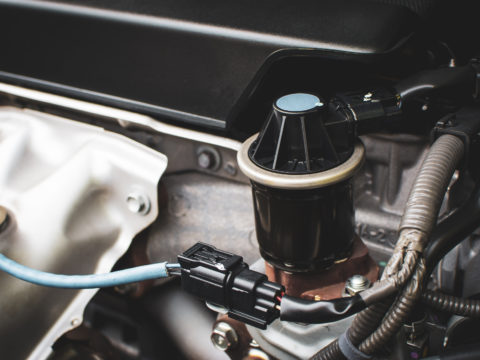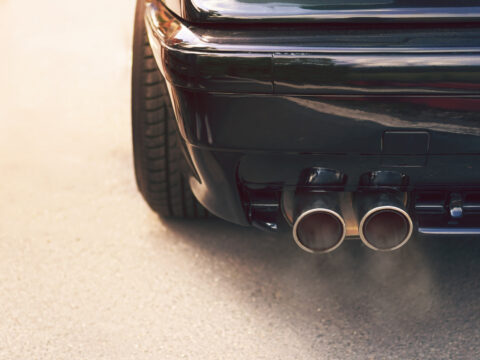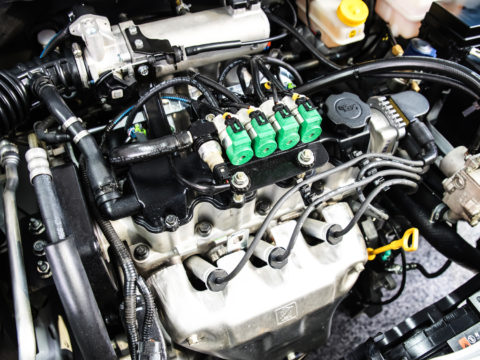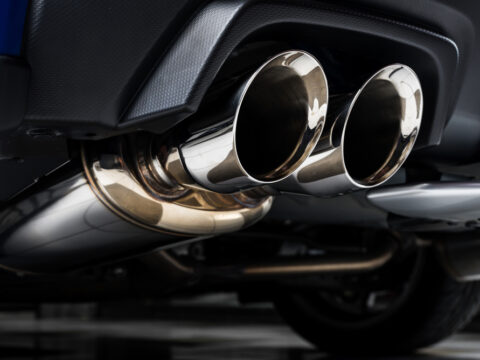Car engineers have spent decades fine-tuning car emissions systems to reduce or personalize the sound a vehicle makes when on the road. But not everyone wants a quiet ride, so modding your car’s exhaust system is one way to completely change the sound your vehicle makes.
Below we will discuss how straight pipe exhaust systems change the sound of your vehicle, how they compare to other types of exhaust systems on the market, the pros and cons of straight pipe exhausts, and more.
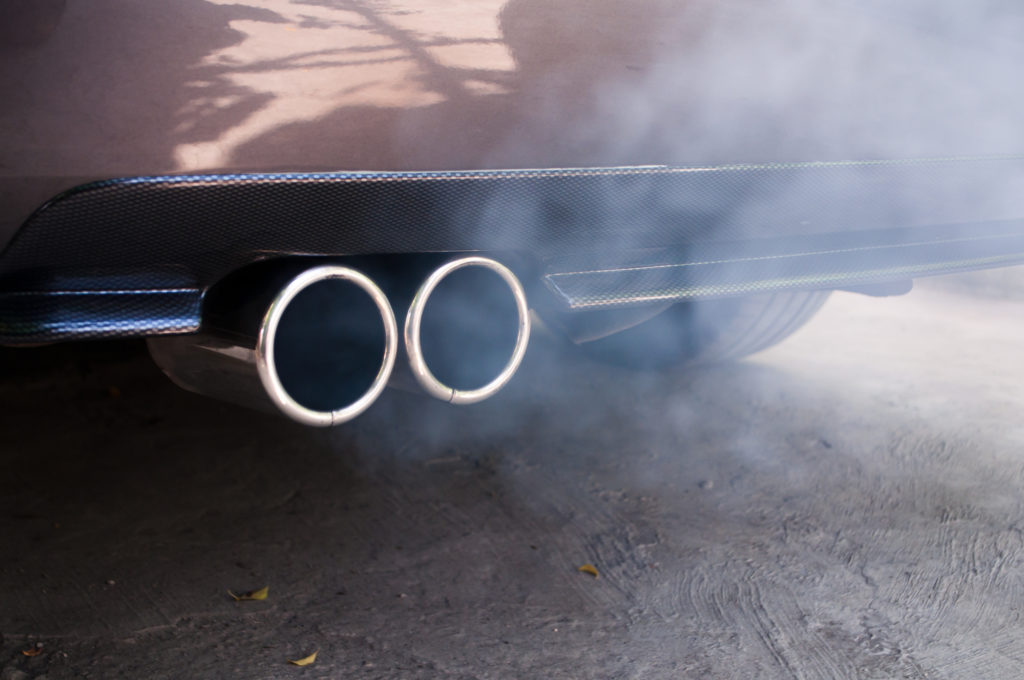
Contents
What is a Straight Pipe Exhaust?
A straight pipe exhaust system on a car means that the vehicle has had the muffler, resonators, and catalytic converter removed. Picture it as an unobstructed, straight pipe going from the header to the tailpipe.
A muffler’s primary function is to reduce the decibel sound a vehicle makes when the engine is running. Resonators act to modify the sound your vehicle makes when running, bringing to mind that iconic Maserati sound. Catalytic converters are responsible for reducing the toxins released from emissions.
Straight piping differs from a muffler delete in that the muffler, catalytic converter, and resonators are taken off, whereas a muffler delete is solely the removal of the stock muffler and replacement with an alternative exhaust pipe.
How Does a Straight Pipe Exhaust System Work?
When it comes to any type of performance mod on your vehicle, the goal is to get more oxygen into the combustion chamber. This boosts the horsepower of the vehicle, which is the main purpose of a straight pipe exhaust system.
Straight pipe exhaust systems function by providing more oxygen to the combustion chamber while allowing a less obstructed route for the emissions to exit. In a standard car, emissions will pass through the catalytic converter, as well as the muffler and resonator. These three components reduce “drone”, or the persistent sound a vehicle makes when in motion, along with toxins released from the emissions.
By removing these mechanics, straight pipe exhaust systems increase the horsepower of a vehicle and increase the sound your vehicle makes as it rides and when the engine starts.
Other Types of Exhaust Systems
There are several ways to modify your exhaust system to change the sound and horsepower of your vehicle. Below, we will discuss the three most common.
Straight Pipe Exhaust vs. Performance Exhaust Systems
Performance exhaust systems do just that and work to boost the performance of your vehicle. This mod offers many of the benefits that a straight pipe exhaust does, without creating excessive noise or removing the catalytic converter.
Installing a performance exhaust system in your vehicle helps to adjust the airflow in the car to increase the vehicle’s horsepower, torque, and overall efficiency. Performance exhaust systems come in X-tubes or H-tubes. Speak with your mechanic about your specific model for the right mods for your car.
Straight Pipe Exhaust vs. Catback Exhaust
A Catback exhaust system changes the mechanics under the car after the catalytic converter to the tailpipe. A Catback system does not detach the catalytic converter, allowing vehicles with this exhaust system to pass emissions tests.
This modification replaces the mufflers, stainless steel tubing, and tailpipe in your vehicle to increase performance, boost horsepower, and increase the sound of your car. All of this is done without producing harmful emissions since the catalytic converter remains untouched.
A Catback exhaust system certainly increases the volume of your car, without being quite as loud as a straight pipe exhaust.
Straight Pipe Exhaust vs. Downpipe
Another common modification for increasing the sound and performance of your vehicle is to install a downpipe. This modification focuses more on the front end of the car rather than after the catalytic converter.
When installing a catted downpipe, the mechanic does not remove the catalytic converter but instead connects the catalytic converter to the exhaust manifold with a larger pipe. This results in a more efficient and smooth movement for emissions passing from the turbine housing to the exhaust system. A catless downpipe does not equip the catalytic converter and is generally not recommended.
This modification is the most expensive of the three mentioned here and can run up to $2,000-$2,500 after parts and installation costs.
Is it Illegal to Have a Straight Pipe Exhaust?
Straight pipe exhaust systems are most frequently seen on racetracks due to their performance-enhancing quality. While you can see vehicles with these exhaust systems on the road, they are extremely loud. For this reason, depending on your state or country, the removal of a muffler or catalytic converter can result in a fine.
Straight pipe exhaust systems remove the mufflers, resonators, and catalytic converter to increase horsepower and the decibel level of sound (dB) produced by the vehicle.
Before you install a straight pipe exhaust in your car, be sure to check your local legislation regarding the removal of mufflers and catalytic converters. You may find that your car will not pass a state emissions test with these modifications.
The Center for Disease Control (CDC) states that any noise above 70dB can damage your hearing over a prolonged time. Straight pipe exhausts convert your car from the stock exhaust sound levels to noise levels ranging from 100 dB up to 120 dB, which is well over the legal limit. Each state has varying levels of how many decibels a car should be. For example, California law will give a fine if your car is over 95 dB.
How to Make Straight Pipe Exhausts Quieter
There are options to make your straight pipe exhaust system quieter. Probably the easiest option is to replace the mufflers. A look on any car forum will come with recommendations for the Glasspack Muffler, AKA the Cherry Bomb. But search around for your car’s specific make and model to find what solution will work best.
Other options to make straight pipe exhausts quieter are to add a straight-through silencer, put a V8 or turbo in front of the straight pipe, or get a resonator.
How to Install a Straight Pipe Exhaust
Professional installation of a straight pipe exhaust consists of running a new exhaust pipe from the header to an exit pipe or downturn under the body of the vehicle. This requires the car to be completely lifted and the new parts welded in.
While you can purchase the parts yourself with a straight pipe exhaust kit, the best thing to do is consult with a professional mechanic. A quick look on Amazon will give you plenty of options for straight pipe exhaust kits at reasonable prices. Your mechanic can help you to choose the best option for your specific car and then install it professionally for you.
How Much Does It Cost to Get a Straight Pipe Exhaust?
The average price for labor for installing a straight pipe exhaust system in your vehicle can run between $75-$200. A straight pipe exhaust kit can cost you upwards of $600 but can be purchased on Amazon for varying prices. Be sure to read reviews and know the exact specifications needed for your car before purchasing, especially when the price looks too good to be true.
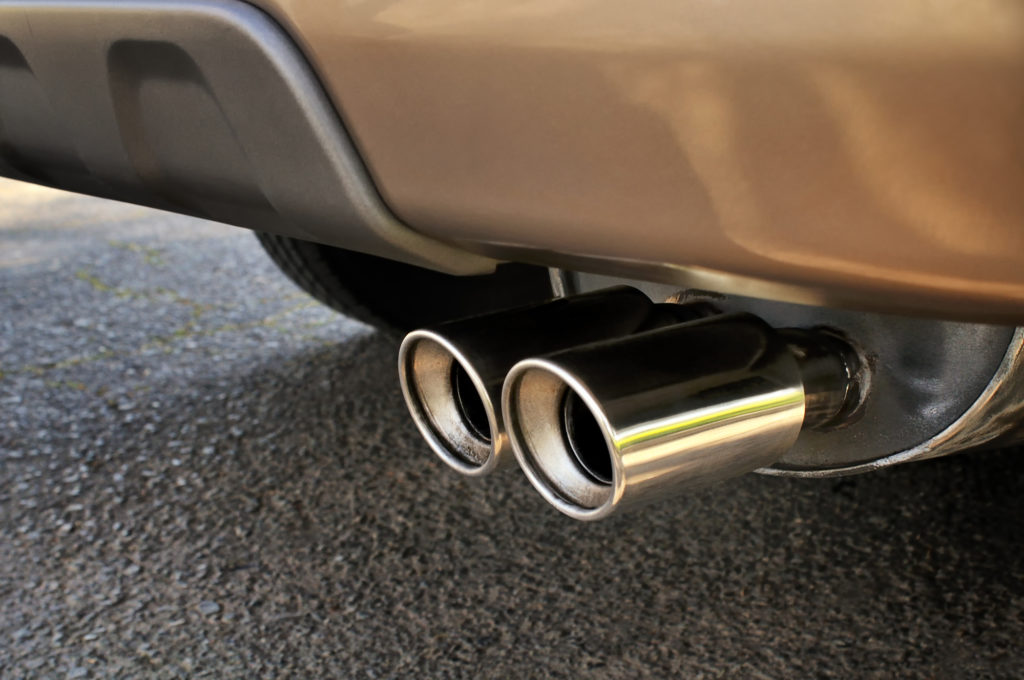
Pros and Cons of Straight Pipe Exhaust
Like most things in life, there are both advantages and disadvantages to installing a straight pipe exhaust. Here are some of the most important to consider.
Advantages of Having a Straight Pipe Exhaust
These are the major advantages of having a straight pipe exhaust:
Better Performance
The main reason to modify your car is to get better horsepower and performance. Straight pipe exhaust systems do just that and this is why professional racers have them installed in their vehicles.
Sound Improvement
If you want the noise your car makes to be noticeable, then a straight pipe exhaust has this as a major pro. This modification will make your vehicle impossible to ignore as it passes by.
Cheaper Maintenance
With no catalytic converter, mufflers, or resonator, a straight pipe exhaust system has fewer parts that need to be maintained.
Disadvantages of Having a Straight Pipe Exhaust
These are the major disadvantages of having a straight pipe exhaust:
Toxic Emissions
Removing the catalytic converter on your car takes out the part of the vehicle that reduces toxic emissions. The removal of this part might be the biggest downside of the straight pipe exhaust. Once your car has this modification, your vehicle will fail emissions tests and become difficult to sell.
Very Loud
While sound improvement is a pro for some, it is a con for others. A straight pipe exhaust system produces a sound above what the CDC recommends is healthy. These vehicles create a lot of “drone” and noise, especially for rear-seat passengers, and are not comfortable to ride in for long durations.

